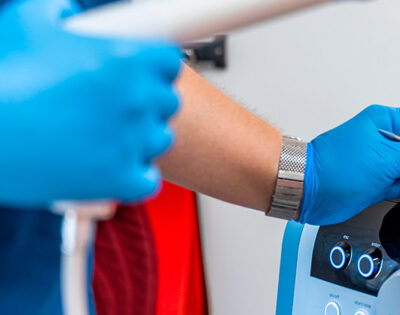Clinical and Sonographic Evaluation of the Effectiveness of Extracorporeal Shock Wave Therapy in Patients with Lateral Epicondylitis
Purpose
The aim of this study is to assess the clinical and sonographic outcomes of radial extracorporeal shock wave therapy (rESWT) in patients with lateral epicondylitis (LE).
Methods

Forty-two patients with LE for at least 3 months were randomized into two groups:
- rESWT group: 21 patients received rESWT treatment once per week for 3 weeks (2000 pulses, 10 Hz, 1.8 bar).
- Sham-rESWT group: 21 patients followed the same schedule, but the device emitted no shocks.
Assessments
Evaluations were conducted before treatment, after treatment, and at one-month follow-up. Metrics included:
- Hand grip strength
- Pain pressure threshold
- Functionality (Patient-Rated Tennis Elbow Evaluation)
- Common Extensor Tendon (CET) thickness via ultrasound
Results
Baseline: No significant differences between groups.
Post-Treatment & Follow-Up: Both groups improved, but the rESWT group had significantly better outcomes in pain, strength, and CET thickness.
Sonographic Findings: Median CET thickness in the rESWT group decreased by 15%, with no significant change in the control group.
Conclusion
rESWT demonstrates statistically superior results in pain relief and tendon healing in lateral epicondylitis patients when compared to placebo treatment.
Study Snapshot
Participants
42 total, all diagnosed with LE for over 3 months.
- 21 in rESWT group
- 21 in sham control group
Treatment Protocol
rESWT: 3 sessions (weekly), 2000 pulses, 10 Hz, 1.8 bar
Evaluation Metrics
- Pain (VAS)
- Grip strength
- Functionality (PRTEE)
- CET thickness (Ultrasound)
Key Result
15% reduction in CET thickness in rESWT group.
Takeaway
rESWT is a promising non-invasive therapy for improving pain and tendon healing in LE patients.






